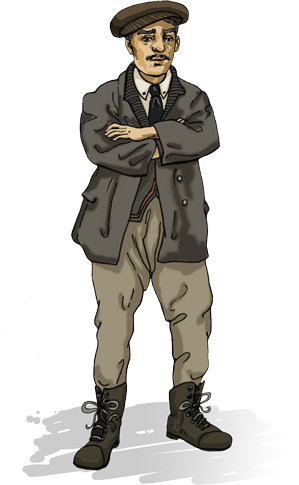-
Vinduw route
-
Boek uw verblijf
-
Koop jeski- en wandelpas

Boek uw verblijf



vrijdag 22 november Bijgewerkt op 11-22-2024 om 8:06
vrijdag 22 november Bijgewerkt op 11-22-2024 om 8:06
Schrijf je in voor onze nieuwsbrief om niets te missen van les Arcs!
![[Translate to English:] [Translate to English:]](/fileadmin/user_upload/headerete2024.jpg)
Often considered a natural rampart, the Alps are however not impassable. Through the presence of the Petit-Saint-Bernard, Bonhomme and Iseran passes, the Haute-Tarentaise valley has brought together important places of passage since prehistory. Since Antiquity, the Petit-Saint-Bernard pass has been a link between local Alpine populations. During the Roman conquest, Emperor Augustus completed the construction of the Roman road. Troops, sovereigns, pilgrims, merchants, bankers and peddlers cross paths on the roads. At the end of the Middle Ages, the County of Savoie controlled five crucial passes, including the Petit and Grand Saint-Bernard.
The rates and dates of the guided tours are presented on My week in Les Arcs, the weekly entertainments programme and in Tourist offices.
The Quartier des Alpins in Bourg Saint Maurice hosted the Blue Devils of the 7th Battalion of Alpine Hunters (BCA) until 2012. This place of memory allows you to discover the Haute Tarentaise valley and the defence works built to protect and control the communication routes to Italy. An opportunity to discover the local military past with its organization, the construction of fortifications, the battles and the men who gave their lives for our freedom and peace.

“My name is Francesco Séconi. Born in Vicenza, I crossed the Alps in 1889 to find work in France. Next to Bourg Saint Maurice, the forts were under construction and I was quickly hired. When I took up my post, I was delighted to find many of my compatriots from different regions of Italy. The work was grueling, the days were endless, and in all weathers, thousands of tons of scrap metal and concrete were used. Ultimately I stayed in France, settled there and started a family. “
FORTS, ON THE PEAKS
The construction and architecture of the forts will adapt to the constant evolution of artillery.
Some key dates of these technological upheavals:
1858: The invention of the rifled cannon allows for an increase in power, precision and a doubling of the weight of projectiles.
1873: The adoption of breech loading allows the modernization of old bronze pieces such as Reffye's 138. It is present in most forts.
1877: Adoption of the new steel barrel 155 from Bange. Range: 9 km.
1878: Adoption of the new steel barrel 120 from Bange. Range: 8 km.
1885: Adoption of a new explosive, “melinite”, in torpedo shells. Ten times more powerful than powder, it requires the reinforcement of certain fortifications with special concrete.
1897: Adoption of the rapid-firing 75 cannon. Its revolutionary hydro-pneumatic brake fully absorbs the recoil of the part.
BATTERIES ON THE SLOPES
In 1913, the Courbaton and Têtes batteries were built.
In 1937, faced with the rise of fascism and Nazism, two strategic routes were created for the supply of men, food and ammunition: one from Peisey-Nancroix and the other coming from Hauteville-Gondon. They are made by ex-combatants of the Spanish Civil War. The name “Route des Espagnes” still exists today for that of Peisey-Nancroix.

It was the main means of communication between 1874 and 1914. It was still used after the arrival of the telephone during the Second World War. Messages are transmitted using Morse code (invented in 1832). The light pulses are produced by a lamp fitted with a blackout shutter. In reception we use a telescope.